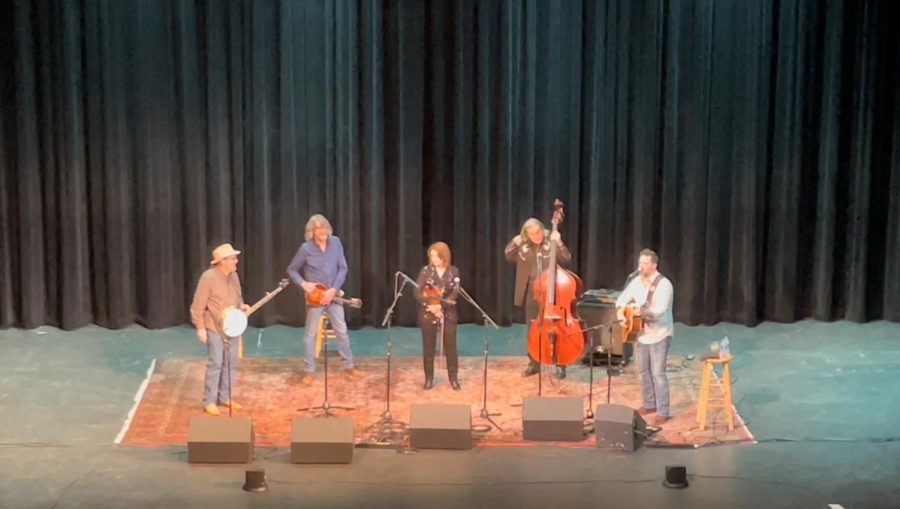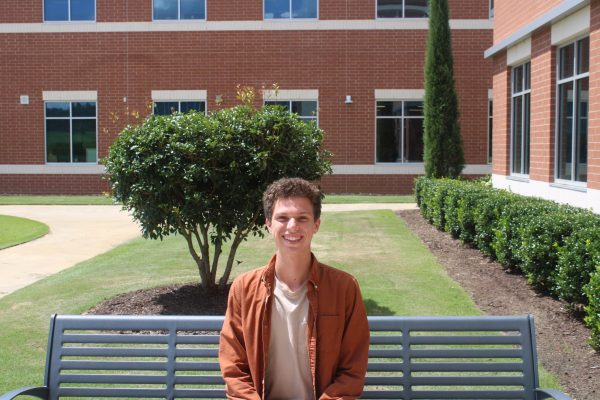The Grass is Always Bluer
Spartanburg’s Bluegrass community continues to grow stronger
The SteelDrivers performing at the Chapman Cultural Center on Feb. 4.
February 16, 2023
Bluegrass music has been a part of American culture since the early 1900s, when mandolin player Bill Monroe formed a band by the name of “The Blue Grass Boys,” named after his home state of Kentucky. Monroe is widely considered the “father of bluegrass music.” The Blue Grass Boys’ distinctive playing style and instrumentation is seen as the traditional way to play bluegrass music. Bluegrass bands typically consist of five acoustic instruments: the mandolin, fiddle, banjo, guitar and double bass. Because bluegrass originated in rural areas of the Appalachian Mountains, most songs are about life in the hills of Appalachia. Vocals in bluegrass bands are high and sharp, without much added decoration.
Madelyn Stephens (10) enjoys listening to bluegrass music. She has never been to a bluegrass event before, but she would like to in the future.
“My favorite thing about bluegrass music is how it gives off a mountain-earthy feel. I like artists like the Avett Brothers and Tyler Childers, who blend folk music with traditional bluegrass styles and instruments,” Stephens said.
Bluegrass has been on the rise in Spartanburg. In 2015, the Spartanburg Philharmonic Foundation created Bluegrass Spartanburg. According to spartanburgphilharmonic.org, the goal of this foundation is to bring “nationally recognized and award-winning bluegrass entertainment to our community.” Bluegrass Spartanburg has hosted guests like Appalachian Roadshow, Rhonda Vincent and the Rage and the Grammy award-winning SteelDrivers. Bluegrass Spartanburg has recently been considering starting community “jam sessions,” where musicians of all ages can come together and play bluegrass music.
Bluegrass has also been featured in musicals, namely “Bright Star,” which was written by famous actor and banjo player Steve Martin. The music is meant to be an homage to traditional bluegrass, as the story is set in the Blue Ridge Mountains during the 1920s. This year, from Jan. 13-22, the Spartanburg Little Theatre put on a production of “Bright Star.”
Theatre teacher Ben Dawkins played in “Bright Star” as Stanford Addams, the villainous mayor’s sleazy attorney.
“Although most of the show’s score is an accurate demonstration of Bluegrass style, the show also showcases other styles of country music such as two-steps, hoedown music, country ballads and other fun odds and ends,” Dawkins said. “Anyone who listens to enough country music will start to hear subtle stylistic differences over the generations that separates genres of country music from the pop-style country tunes that are often played over the radio.”
Sarah Kneisley (12) went to see Dawkins perform on January 13 with some of her friends.
“The show was really captivating, but seeing Dr. Dawkins perform made the show so amazing. I loved the music because it was something different than in most musicals, and I thought it represented the setting and time period of the play,” Kneisley said.





